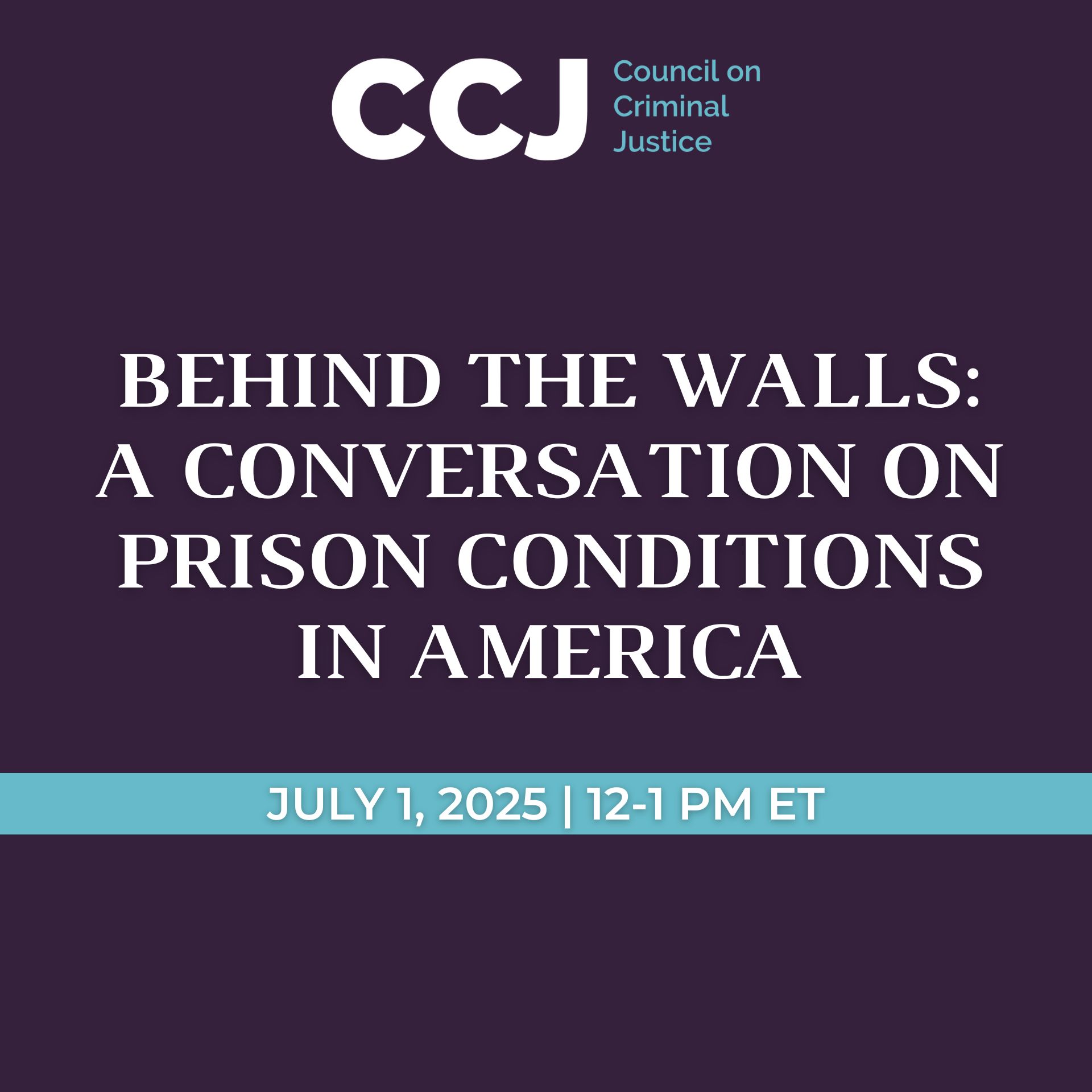Higher homicide rates partially explain the distinction, research for CCJ task force finds
FOR IMMEDIATE RELEASE
5:00 a.m. ET, December 20, 2022
Contact: Jenifer Warren
jwarren@counciloncj.org
WASHINGTON, D.C. – New research released today by a Council on Criminal Justice (CCJ) task force shows that while the use of prison sentences of 10 years or more has increased globally in recent decades, the United States is an outlier among nations in the extent to which it imposes them.
Long sentences are imposed more frequently and are longer on average in the U.S. compared with most other countries, according to the analysis produced for CCJ’s Task Force on Long Sentences by Prof. Lila Kazemian of the John Jay College of Criminal Justice. The average long sentence in the U.S. is more closely aligned with criminal justice practices in Mexico, El Salvador, and other Latin American countries than with those of peer nations in Europe.
Differences in the actual amount of time people serve behind bars are smaller, the study found, owing to requirements in some countries that people serve greater portions of their court-imposed sentences before release.
The higher rate of homicide in the U.S. compared with European countries partially explains its more frequent use of long sentences, according to original calculations. For instance, the report says that “while Georgia and Alabama were ranked first and second for the percent of the prison population sentenced to 10 or more years, these states dropped down to the 36th and 55th ranks, respectively, with the adjustment for their higher homicide rates. Luxembourg, Italy, Spain, Croatia, and Utah are the top five users of long sentences adjusted for homicide rates. Norway, which is ranked among the lowest nations for incarceration rate (73rd out of 75 jurisdictions included in the comparison) and percentage of people serving long prison terms (70th out of 75), jumps up to the 16th spot when considering its low homicide rate.”
“This is the most authoritative and comprehensive report to date on how long sentences in the U.S. compare with those in other nations,” said John Maki, director of the Task Force on Long Sentences. “Its findings underscore the uniquely severe features of U.S. sentencing, which has more in common with developing nations than other affluent countries.”
Because criminal justice policies and incarceration rates vary dramatically across U.S. states, Kazemian compared sentencing trends in individual states with other nations. A higher proportion of long sentences in a jurisdiction could either be the result of greater use of such sentences or of less use of prison for more minor offenses. As such, a high proportion of long sentences is not synonymous with more punitive sentencing policies and practices.
Additional findings in the report show that:
- Many European countries have increased their use of long sentences in recent decades. In Germany, for instance, the proportion of the long-term prisoner population sentenced to life imprisonment increased from 21.4% in 1995 to 30.2% in 2012.
- For homicide and rape—the crimes most likely to result in a long sentence—Australia and the U.S. were leaders in the amount of time people actually serve behind bars, according to the most recent available data, with England, Wales, and Scotland not far behind.
- Comparisons of average sentence length for homicide show that the U.S. has the longest sentences among nations at 40.6 years, compared to 34.2 years for Mexico (ranked second) and 6.1 for France. The higher average sentence length in the U.S. may partly reflect the fact that American policies allow for sentences exceeding 100 years.
- The U.S. holds a substantial portion (40%) of the world’s population of people serving life sentences, as well as the vast majority (83%) of those sentenced to life without the possibility of parole. While most jurisdictions with life sentencing laws have a provision for release, the amount of time people must serve before becoming eligible varies widely. In Belgium, Denmark, and Finland, it’s 12 years or less. In Georgia, it’s 30 years and in Texas it’s 40 years.
The Task Force on Long Sentences is examining how prison sentences of 10 years or more affect incarcerated people and their families; victims and survivors of crime; correctional staff; communities; and public safety. Co-chaired by former U.S. Deputy Attorney General Sally Yates and former U.S. Rep. Trey Gowdy (South Carolina), the panel includes 14 other members representing a broad range of experience and perspectives, including crime victims and survivors, formerly incarcerated people, prosecutors, defense attorneys, law enforcement, courts, and corrections. Early next year, the panel is expected to release recommendations for changes to policy and practice that can strengthen public safety and advance justice.
Support for the Task Force comes from Arnold Ventures, the Ford Foundation, Southern Company Foundation, and Stand Together Trust, as well as #StartSmall, the John D. and Catherine T. MacArthur Foundation, and other CCJ general operating contributors.
About the Council on Criminal Justice
The Council on Criminal Justice (CCJ) is a nonpartisan invitational membership organization and think tank that advances understanding of the criminal justice policy challenges facing the nation and builds consensus for solutions based on facts, evidence, and fundamental principles of justice.
Other CCJ task forces have addressed federal criminal justice priorities, COVID-19 and criminal justice, policing, violence reduction, and Medicaid and reentry. A commission focusing on the extent and nature of military veterans’ involvement in the criminal justice system plans to issue a first round of recommendations in March.
To learn more, visit counciloncj.org.



